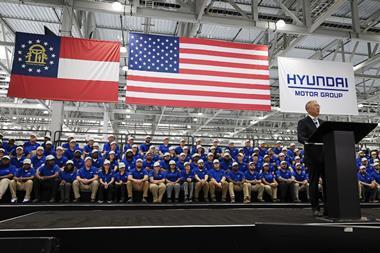
The decision will mean the closure of Ford’s Broadmeadows assembly plant and the Geelong engine plant, both situated in the state of Victoria. The closures will affect 1,200 jobs. The company said it would retain 1,500 jobs through continued research and design posts and across its dealer network.
“All of us at Ford remain committed to our long history of serving Australian customers with the very best vehicles that deliver cutting edge technology at an affordable cost,” said Bob Graziano, president and CEO of Ford Australia. “Unfortunately, due to challenging market conditions we are unable to do that longer term while continuing to manufacture locally.”
Ford has said it will continue to import and distribute vehicles through its 200-strong dealer network. Moreover, it said it will be launching updated versions of the Falcon, Falcon Ute and Territory next year as well as continuing to offer the Kuga, Ranger and Focus models. It said by 2016 it would increase by 30% the number of new vehicles offered to Australian customers.
However, a spokesperson for Ford could offer no indication which regions would be supplying those vehicles and what the shift in production will mean for outbound supply chains.
“We have literally just made this decision and now need to work through various aspects of how we will implement it, including how we manage logistics and other aspects after the end of 2016,” she told Automotive Logistics News.
Costs in neighbouring Asia-Pacific markets are roughly a quarter of what they are in Australia and Ford is already well-established in the region, with assembly plants in China, Thailand and Vietnam.
Asked about the impact on the supply base in Australia the spokesperson said that one of Ford’s key reasons for announcing its decision now, more than three years ahead of when it plans to cease manufacturing, is to give those suppliers and the broader automotive industry in the region time to manage a smooth transition from Ford as a local manufacturer.
Review process
Ford said that it had considered a number of scenarios for activity in Australia over the past year.
“All viable alternatives were evaluated as part of the process, including manufacturing various types and combinations of vehicles for local sale, as well as the viability of a significant export programme,” said the company in a statement. “The scenarios investigated also included varying levels of government support, manufacturing cost reductions and productivity improvements.”
Last year the Australian government under prime minister Julia Gillard pledged a A$34m subsidy for Ford but admitted in the wake of Ford’s decision that the strength of the Australian dollar “bears down on Australian manufacturing and does make it a difficult environment for manufacturing to prosper”.
The strength of the Australian dollar has led to an increase in sales of cheaper imported vehicles from southwest Asia and had an impact on the vehicles Ford exports. Vehicle sales in Australia last year climbed by 10.3% to 1.1m but the top three vehicles were from Mazda and Toyota. Ford’s Falcon saw sales drop by more than 25%. Ford was outsold for the first time last year by Mazda and Hyundai, two carmakers that don’t have manufacturing bases in the country and only import into Australia.

























![Global[1]](https://d3n5uof8vony13.cloudfront.net/Pictures/web/a/d/s/global1_726550.svgz)










